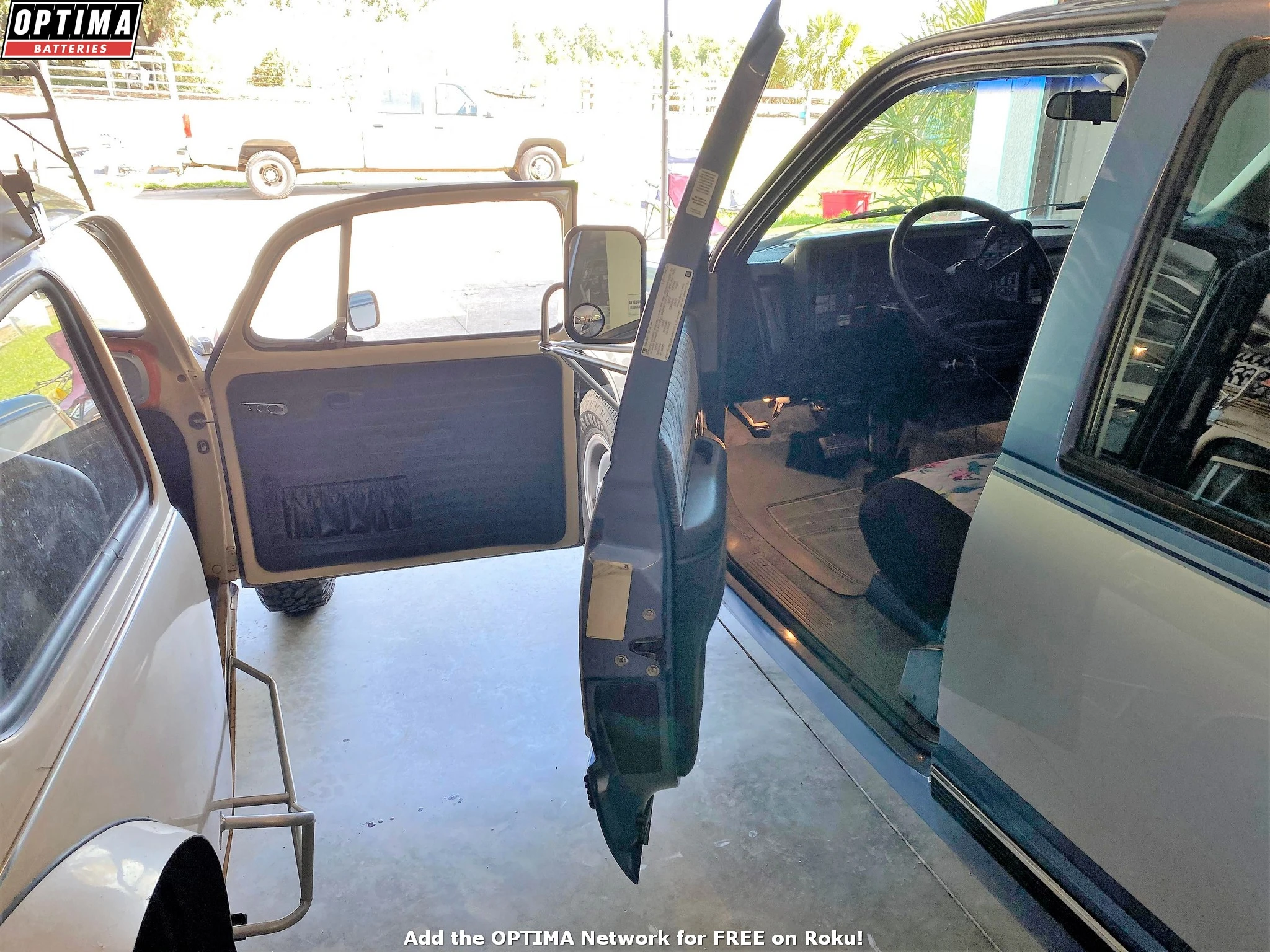How Long Can You Leave a Car Door Open Without the Battery Dying?

- Sponsor
- OPTIMA Batteries
- Location
- Lake County, FL


How long can you leave a car door open without the battery dying? That's not such a simple question, that it could be answered definitively by saying something along the lines of "72 minutes." There are many factors that will impact this outcome, but we'll start by saying that if you are reading this after searching on google, the answer is unfortunately "not as long as you left your car door open." So let's look at what will impact the outcome of leaving your car door open-
-How large is your battery?
-How much electricity does your vehicle use when the car door is open?
-Is your engine running while the door is open?
-What was the state of charge of your battery when you left your door open?
Now that we've listed those factors, let's take a closer look at why they matter, starting with the size of the car battery. Generally speaking, the larger a battery is physically, the more reserve capacity it will have and the longer it will be able to provide electricity when demanded (like when you leave your car door open).
Knowing how much electricity your vehicle uses while your car door is open is also an important consideration in this equation. Most people will never be able to figure that out, but there are some simple examples we can share to illustrate differences. The Volkswagen Baja Bug on the left doesn't have any interior lights or anything else connected to the door, so if you leave the door open on that car, the battery won't be asked to deliver any more energy, than if it were closed. The vehicle on the right is a 1994 Chevrolet Suburban. When the door is left open in that truck, several lights, including the light visible underneath the dashboard turn on and stay on, as long as the door is open.
Newer vehicles may automatically turn off interior lights after a specific period of time, if a door is accidentally or intentionally left open, to conserve energy in the battery. Older vehicles, like this Suburban aren't as "smart" and will just keep powering those lights until the battery is completely discharged.
The next factor to consider is if the engine is running. This may seem like a no-brainer, but for the sake of covering off on all the factors that may impact leaving your car door open, if your engine is running, your vehicle's alternator or charging system is likely providing the power required when a door is open. In that case, it then becomes a questions of how much gas is in the tank and how much fuel the vehicle uses, before you ever get to the questions about the size of the battery and the electrical demand of the vehicle in relation to the car door being open.
The final consideration is knowing what the state of charge of the battery was, when the door was left open. Most folks don't know the answer to this question (Do you know for sure what the voltage is in your car battery at this very moment?) but to be safe, one should always assume their battery is not 100% charged, because most are not. In fact, we recommend topping off the charge on a battery in any modern vehicle at least once a month with a battery charger. If when you go to do this, you find the voltage is less than 12.6 volts, you may need to charge the battery more often, as your driving habits may not be conducive to keeping your battery fully-charged.
That brings us to our final piece of advice involving this scenario. If you've left your car door open and it has discharged your battery to the point that you cannot start your car, you should fully-recharge your battery with a battery charger as soon as possible. Jumper cables and jump packs are great for emergency situations, but you should treat them like a one-gallon can of gas.
If your car only had a gallon of gas, you'd probably go looking for a gas station right away. The same scenario should take place with a battery charger, if your battery only had enough energy to barely start your engine once. If you don't fully-recharge your battery as soon as you can, you may find yourself going into a routine of having a dead battery and needing a jump-start, until either the battery fails (expensive) or the alternator/charging system fails (really expensive).
